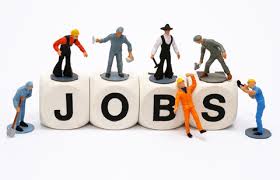In October a total of 214,000 new jobs were created in the United States, a bit shy of estimates, but still high enough to maintain labor market momentum as the Fed decides when to rise interest rates.
According to the U.S. Department of Labor, the American unemployment rate dropped to 5.8% – the lowest level since mid-2008.
This is the ninth month in a row that over 200,000 new jobs have been created – a remarkable rebound after years of lackluster economic growth following the economic crisis.
Since the beginning of 2014 US unemployment has dropped by 0.8 percent and 1.2 million previously unemployed people have found work.
The labor force participation rate surged to 59.2 percent in October, up 0.2 percent from September. This is the highest it has been since mid-2009.
However, many analysts, while keeping a close eye on the number of new jobs, are concerned about growth in hourly wages.
For months hourly earnings have not increased, as a result inflation is well below the Fed’s 2% target rate. Average hourly earnings have only increased by 2% over the past year, far lower than the 3%-3.5% rate the Fed considers necessary to keep inflation at its target 2% rate.
Todd Schoenberger, Managing Partner of LandColt Capital LP, in New York told Fox:
“Although the headline number is decent, the details behind the curtain will be particularly concerning to investors and Main Street. Wage growth is embarrassingly low, especially considering where we are in terms of the so-called economic recovery. And the variety of jobs continues to be a joke.”
Main Street, in North America, refers to the interests of the Average American, as opposed to Wall Street, i.e., big corporations.
He added:
“Two-thirds of jobs created in 2014 pay just above minimum wage, whereas less than 50% of jobs created in 2013 were of the low-income variety. Today’s weak report validates Tuesday’s election outcome as voters remain angry at their economic outlook.”
Chris Williamson, analyst at research firm Markit, said:
“U.S. unemployment fell to a six-year low of 5.8% in October as companies continued to take on staff in impressive numbers. The data add to signs that the economy is enjoying another period of strong growth in the fourth quarter. However, lackluster wage growth takes some of the shine off the improvement in the employment situation, and also acts as a bar to raising interest rates,”
However, more employment and impressive job growth could result in higher wages, say some analysts.
David Kelly, chief global strategist at J.P. Morgan funds, said:
“Hourly wages for production and non-supervisory workers were unchanged in September, but, given a falling unemployment rate, could well begin to rise more quickly in the months ahead,”

